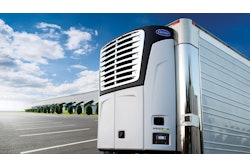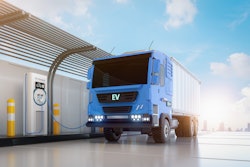
Cold chain fleet operators face growing pressures to maintain precise temperature control, ensure product safety, and prevent losses within increasingly complex supply chains. Advanced technology has become crucial in tackling these challenges, transforming fleet management and the integrity of the cold chain. These innovations, from wireless sensing to artificial intelligence (AI), reshape temperature-controlled logistics, but only when applied strategically and holistically.
This transformation has significantly accelerated over the past two decades, primarily due to advancements in technology that address increasingly complex operational challenges. Severe weather patterns, increased traffic on roadways, and an overload of telematics data create obstacles in the cold chain that can lead to operational inefficiencies and decision-making difficulties.
Whether through AI, Software-as-a-Service (SaaS) solutions, or vehicle telematics, technological advancements and integrated operations are transforming cold chain logistics. To understand how these significant technological adoptions are progressing the fleet management industry, here’s what business leaders should keep in mind.
Battery-free wireless tags
Real-time visibility and tracking of assets are particularly vital for cold chain logistics and fleets transporting sensitive cargo. One effective solution is using battery-free tags to monitor product movement and temperature throughout the transportation network. Battery-free tags offer handling, tracking, and historical data for each product from manufacturing to the point of sale.
Improved visibility is essential for effective management, and the battery-free tags provide the data necessary to determine when critical interventions are needed, like when food or pharmaceuticals are approaching their expiration dates. The sensors also play a significant role in security management, offering routing data along with an encrypted payload to identify and upload sensing information from tags while safeguarding the items, thereby enabling complete visibility within the transportation network. Although highly accurate, the tags are easy to attach automatically and are cost-effective.
Cargo owners can also coordinate tag technology to support both storage and transportation facilities. The tags further enable the automation and aggregation of sensor data collection along the transportation route, ensuring near real-time visibility of goods both in the warehouse and on the road.
Highly accurate, durable sensors
When transporting sensitive cargo such as food products, it’s essential to maintain constant and reliable climate sensing and logging capabilities. These sensors monitor temperature, transmitting data at regular intervals (for example, every 10 minutes) to ensure clear visibility throughout the entire manufacturing and transportation network.
The power of AI
AI now plays a major role in fleet technology, offering new capabilities and valuable data insights that are often hard to detect otherwise. In cold chain logistics specifically, AI-powered temperature management solutions are increasingly used instead of (or alongside) traditional trailer refrigeration units (TRUs). This approach reduces human error since TRUs depend on operational representatives or drivers to precool the unit and monitor its temperature.
With AI Commodity Temperature Handling, AI agents (an autonomous system) identify and report discrepancies between product delivery details (e.g., grocery delivery) and TRU settings (e.g., frozen food temperature settings) while also alerting to independent temperature alarm thresholds based on configured TRU temperatures.
AI and machine learning (ML) can also escalate TRU and temperature disruptions that last too long, alerting upper management if the alarm is not addressed within the specified timeframe. This process ensures no temperature issue lingers beyond the maximum cold chain resolution period, typically four hours, without full carrier awareness and support.
Advanced edge processing extends the battery life of wireless sensors by optimizing sensing activities based on various environmental factors, including movement, vehicle speed, geolocation, temperature, and door operations. This approach to power preservation reduces costs and data volume, enhancing overall system performance and cost efficiency.
Last year, the freight industry saw a 33% rise in theft incidents, totaling approximately $35 million in lost value – just in Q2. With AI, retailers can leverage product data and status tracking updates to identify when and where inventory discrepancies, theft, and damage occur. This allows them to monitor and address negative trends while benchmarking systems for ongoing improvement.
The telematics gateway
Cold chain logistics presents distinct complexities beyond standard logistics and fleet operations. Success depends on careful management, optimal control, and real-time temperature and humidity monitoring. It can also be difficult for fleet management to integrate and align data from various sources.
That’s why an increasing number of cold chain carriers are using telematics gateways, integrating telematics portal services, and achieving complete visibility on a unified fleet intelligence platform. Since most carriers work with multiple OEMs and TRU fleets, integrated aftermarket telematics solutions allow them to operate their core business without the distraction and challenges of managing several platforms.
A solution? Using a unified platform to ingest and harmonize data from any IoT device, OEM system, or external data source, can create a truly comprehensive operational view.
The key here lies in using a platform that seamlessly integrates with existing enterprise systems while remaining flexible enough to scale with changing business needs.
What’s next?
For cold chain companies to better manage fleet operations, they must also consider federal rules and regulations that are continually evolving to meet new safety standards, such as the Food Safety Modernization Act (FSMA), which “requires those who transport food to use sanitary transportation practices to ensure the safety of food.”
That said, the power of data is key to achieving this. Investing in advancing technology will enable cold chain companies to access and interpret their data quickly, helping them identify trends in safety, quality, theft, and overall operations while consistently reevaluating improvement initiatives.
The success of cold chain operations will increasingly depend on how effectively companies harness their data ecosystem. Those who embrace comprehensive, integrated technological solutions today will be better positioned to adapt to tomorrow’s challenges, whether from stricter regulations, shifting consumer demands, or evolving supply chain complexities.

















